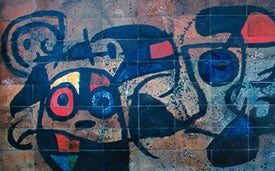50 years ago at the HLS Forum
In October 1962, the Rev. Martin Luther King Jr. spoke at Harvard Law School on “The Future of Integration.” It was six months before he would be imprisoned in a Birmingham jail, 10 months before the March on Washington, almost two years before the signing of the Civil Rights Act and almost six years before his assassination. He called for strong, forthright civil rights legislation, and refuted what he called the myth that time and education were the only ways to bring about change. “It may be that the law cannot make a man love me,” he said, “but it can keep him from lynching me.”
“Integration is not some lavish dish that the federal government will pass out on a silver platter”
Rev. Martin Luther King Jr.
But he also told the audience, “Integration is not some lavish dish that the federal government will pass out on a silver platter.” In addition to working through legislative channels, and through the courts, “the Negro must be willing to engage in nonviolent direct action,” he said.
“Even if [the opponent] tries to kill you, you develop the quiet courage of dying, if necessary, without killing,” King said.
In 1962, in addition to King, the Harvard Law School Forum, a student-run speaker series, hosted Jimmy Hoffa and Billy Graham. Hear their speeches.
HLS Citings: From Michelman on Property to Bebchuk on Shareholder Power, HLS Faculty Articles Among the Most Cited
Harvard Law School faculty are among those who have written the most-cited law review articles, according to a recent study in the Michigan Law Review by Fred R. Shapiro ’80, a librarian at Yale Law School, and Michelle Pearse, a librarian at Harvard Law.

The study includes two lists: a selection of the 100 most-cited articles of all time, and another of the 100 most-cited articles from the last 20 years, because, according to Shapiro, “It takes decades for an article to amass the stratospheric citation count needed to make [the first list].”
Out of 200 articles on both lists, 29—or 15 percent of the total—were written or co-written by current HLS faculty: Lucian Bebchuk LL.M. ’80 S.J.D. ’84, Yochai Benkler ’94, Jody Freeman LL.M. ’91 S.J.D. ’95, Jack Goldsmith, Louis Kaplow ’81, Duncan Kennedy, Reinier Kraakman, Lawrence Lessig, Frank Michelman ’60, Dean Martha Minow, Robert Mnookin ’68, Mark Roe ’75, Cass R. Sunstein ’78, Laurence Tribe ’66 and Mark Tushnet. Many of these faculty members wrote more than one most-cited article.
Heard on Campus: ‘Losers’ Rules’

.Nancy Gertner (right) at the implicit racial bias conference
This summer at a conference at Harvard Law School, HLS Professor of Practice Nancy Gertner called attention to what she called a “structural” problem that poses daunting challenges for plaintiffs in discrimination cases: The written law is based on what judges have to say when they grant summary judgment—and virtually all parties who move for summary judgment are defendant companies or organizations, not plaintiffs. She called the result “losers’ rules.”
“If case after case recites the facts that do not amount to discrimination,” said Gertner, who retired from the bench last fall after 17 years as a U.S. District Court judge, “it should come as no surprise that the decision-makers at all levels have a hard time envisioning the facts that comprise discrimination.”
Gertner’s remarks were part of “Implicit Racial Bias Across the Law,” a conference that coincided with the publication of a book on the topic co-edited by Justin Levinson LL.M. ’04 and Robert J. Smith ’07, who were among the participants.
Read more about the event or watch video.
Ask the Bulletin: Art Appreciation
This summer, after Spanish painter Joan Miró’s “Etoile Bleue” sold for $37 million on auction at Sotheby’s, Arthur Greenbaum ’55 of New York City remembered another Miró—hanging in the Harvard Law School dining hall when he was a student.
Greenbaum says that back then he had little appreciation for the mural’s colorful abstraction, which some have said represents a bullfight: “We thought it looked obscene.”

But as he heard news of the record sale this summer, he recalled the school taking down the artwork, and he called the Bulletin to find out whatever happened to that mural.
According to a Harvard Crimson article from Nov. 10, 1960, the artwork’s fate was sealed after Miró paid a visit to the school to see the work, which had been commissioned by the building’s architect, Walter Gropius. “The artist himself first observed the deleterious effects which a radiator below the mural had caused.”
The article suggests that Greenbaum wasn’t the only student who hadn’t appreciated that particular piece of modern art at the time. According to the Crimson, one student described the painting as “appropriate for an evil child’s nursery.”
But by 1960, after the mural was taken down, Miró had created a ceramic replacement, which, after being exhibited in Barcelona, Paris and New York, was installed in 1961 in the Harkness Commons, where it hangs today.
As for the damaged original, it was ultimately acquired by the Museum of Modern Art in New York City—a subway ride away from Mr. Greenbaum.

Milestone
For the first time ever, an entering class at Harvard Law School starts the year in the Wasserstein Hall, Caspersen Student Center, Clinical Wing Building.
